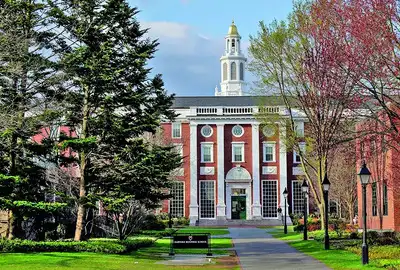It sounds different at first, how could one of the world’s most prestigious Ivy League institutions be more accessible than India’s own engineering strongholds? But for thousands of Indian students each year, that’s the sobering reality.Harvard, with its global reputation and ultra-selective admissions, is seen as the pinnacle of academic achievement. Yet for many top Indian students, clearing the difficult Joint Entrance Examination (JEE) for the Indian Institutes of Technology (IITs) feels even harder. Statistically, they’re right.While Harvard accepts about 3% to 5% of applicants, the top IITs admit less than 0.2%, a competition so fierce it borders on the impossible, according to The Economist. And the pressure isn’t just numerical, it’s cultural, psychological, and systemic.
A test of endurance, not excellence
India’s entrance exams are unforgiving. Students begin preparing years in advance, often sacrificing adolescence for a shot at a seat in IITs or IIMs. In coaching towns like Kota, teenagers live regimented lives, measured not in experiences but in mock tests, cutoffs, and daily rankings.Contrast that with American universities like Harvard, which adopt a holistic admissions process, one that considers essays, recommendation letters, extracurriculars, and personal character alongside academic merit. In short, they assess potential, not just performance.
Rejection at home, recognition abroad
This paradox plays out year after year: Students who are denied entry into India’s top institutes end up accepted by Ivy League schools. It isn’t that they’re less intelligent; it’s that India’s system is designed as a sieve, not a searchlight. It filters ruthlessly, often overlooking creative thinkers, late bloomers, and non-conformists.Over 60% of the top 100 IIT rankers still leave India for graduate studies abroad. And now, many who fail to enter IITs at all are finding prestigious opportunities in the West, because, in many ways, they are finally being seen.
A pipeline built on pressure
According to The Economist, nearly one-third of all international students in the US are Indian. Many pursue STEM fields, drawn by flexible curricula, research opportunities, and comparatively less cut-throat undergraduate admissions. It’s no surprise, then that even with volatile visa policies and occasional political hostility, like those during Donald Trump’s presidency, Indian students continue to look West.Germany, Canada, and even the Netherlands are emerging as new favourites for Indian families wary of the IIT rat race. These countries offer not just quality education but a reprieve from the emotional toll exacted by India’s hyper-competitive model.
What does this say about India’s system?
That Harvard might be more accessible than an IIT is not a compliment to American universities; it’s an indictment of India’s own educational gatekeeping. Our brightest minds should not have to seek validation from abroad because their potential wasn’t shaped into the narrow mold demanded by entrance tests.The question isn’t whether Indian students are capable enough for the Ivy League. Clearly, they are. The question is: Why must they leave India to feel worthy?Until we reimagine our idea of merit—from a single number on an answer sheet to a fuller picture of capability and creativity, India will keep exporting talent it fails to nurture. Harvard may keep opening its doors.But shouldn’t India do the same?













